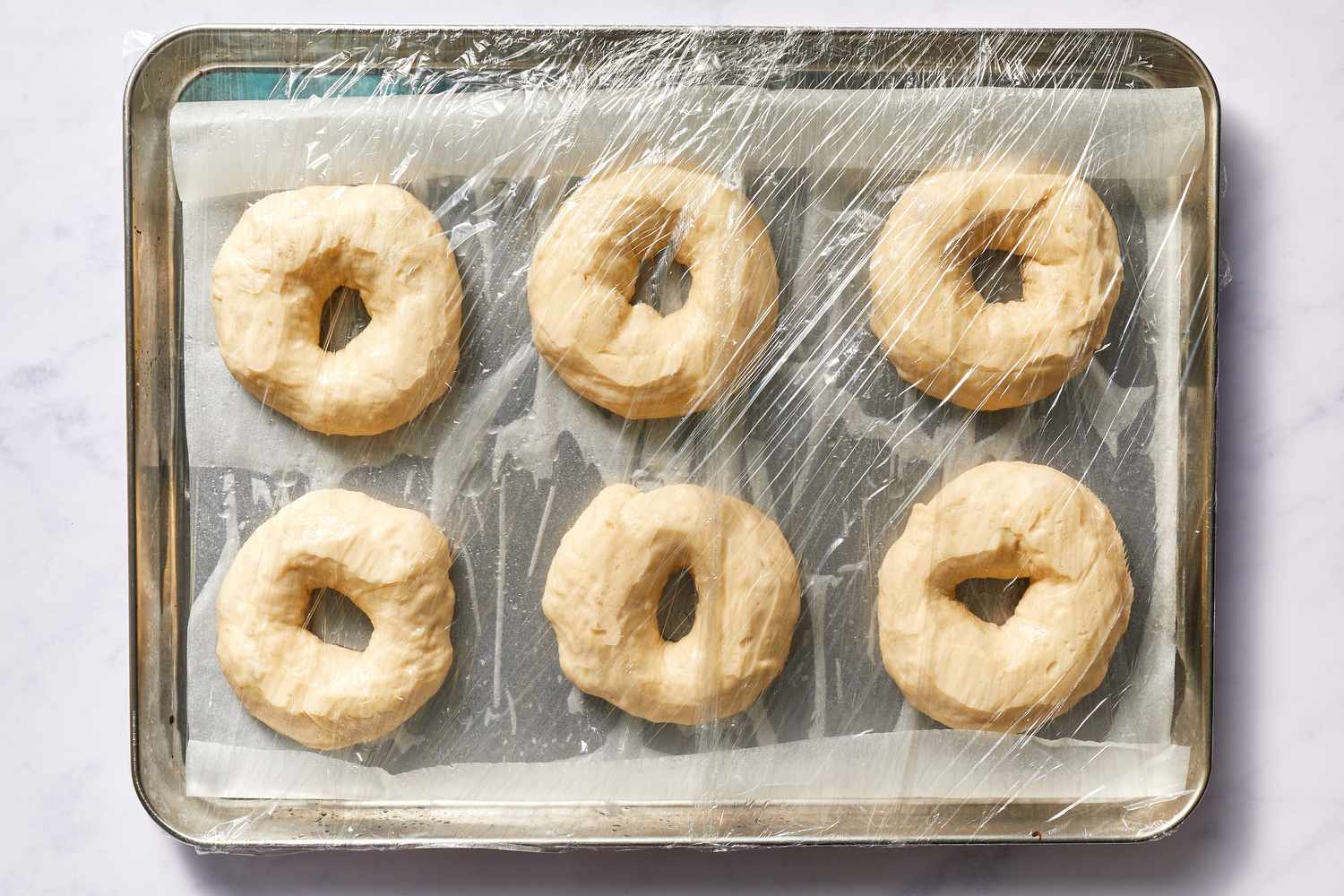These naturally leavened sourdough bagels are a nice change from the traditional recipe that uses yeast. They have a mild tang and chewy texture that can only come from old-world bread-making methods and are a fun way to use your sourdough starter.
Although not a difficult process, these sourdough bagels do take more time to make than regular bagels; plan to allow the bagel dough to rest several times and rise overnight in the refrigerator. If you want bagels that have a more tangy flavor, try leaving the dough in the refrigerator for an extra day or two before you poach and bake them. Generally, the longer and cooler the fermentation, the more the dough will develop that characteristic acidity.
Feel free to top the bagels with sesame seeds, poppy seeds, everything bagel seasoning, or coarse salt before baking. It is best to use a kitchen scale for this recipe since the ingredient measurements are by weight as this is the most accurate way to measure when baking.
Ingredients
-
110 grams sourdough starter
-
165 grams water
-
330 grams bread flour
-
25 grams honey
-
8 grams sea salt
-
1 tablespoon baking soda
-
Sesame seeds, poppy seeds, everything bagel seasoning, and coarse salt, optional
Steps to Make It
Make the Bagel Dough
-
Gather the ingredients.
The Spruce Eats / Cara Cormack
-
Add the sourdough starter, water, flour, honey, and salt to a large bowl. Stir with a spoon to combine.

The Spruce Eats / Cara Cormack
-
Knead the dough with your hands until well mixed, about 5 minutes. Cover the bowl with a damp towel or plastic bag and let rest for 30 minutes.

The Spruce Eats / Cara Cormack
-
Stretch and fold the dough. Rest for another 30 minutes.

The Spruce Eats / Cara Cormack
-
Line a sheet pan with parchment paper. Lightly grease the parchment with spray oil.

The Spruce Eats / Cara Cormack
-
Divide the dough into 6 pieces weighing approximately 100 grams each.

The Spruce Eats / Cara Cormack
-
To shape the bagels, roll each piece into a rope approximately 12 inches long. Lightly moisten both ends of the rope, and then firmly press them together so the rope forms a closed loop. Make sure to let the ends overlap by about 3 inches so you get a nice strong seam.

The Spruce Eats / Cara Cormack
-
Place the bagels on the parchment and cover them with plastic wrap.

The Spruce Eats / Cara Cormack
-
Allow them to rise at room temperature for about 90 minutes, then put them in the refrigerator and leave overnight.

The Spruce Eats / Cara Cormack
Cook the Bagels
-
Remove the bagels from the refrigerator and let sit for 60 to 90 minutes.

The Spruce Eats / Cara Cormack
-
Preheat the oven to 500 F. Bring a large pot of water to a boil. Add the baking soda.

The Spruce Eats / Cara Cormack
-
Add the bagels to the boiling water and poach for 2 minutes, flipping halfway through.

The Spruce Eats / Cara Cormack
-
Remove with a wire spider or slotted spoon and return to the greased, parchment-lined sheet pan. Sprinkle with seeds or salt if desired.

The Spruce Eats / Cara Cormack
-
Place in the oven and bake until golden, 15 to 18 minutes.

The Spruce Eats / Cara Cormack
-
Cool on a wire rack.

The Spruce Eats / Cara Cormack
Sourdough Starter Tip
The sourdough starter you need for this recipe is composed of equal parts flour and water by weight. Therefore, the 110 grams of sourdough starter should be made from 55 grams of flour and 55 grams of water. This is important because bagel dough needs to be very firm. If there’s too much water, it will be difficult to properly shape the bagels and they won’t have the right texture. Different flours can absorb different amounts of water, so if this is your first time making bagels, or the first time with a new brand of flour, hold back a little water until you get a feel for the dough’s texture. Then add the rest if necessary, erring on the side of less.
Tips
- For poaching the bagels, it’s best to use a vessel that can fit all the bagels at once, like a large braising or roasting pan.
- Be sure to grease the parchment paper; wet dough baked on dry parchment has a tendency to stick.
- The bagels will keep in a sealed container for up to a week or frozen for at least three months.

